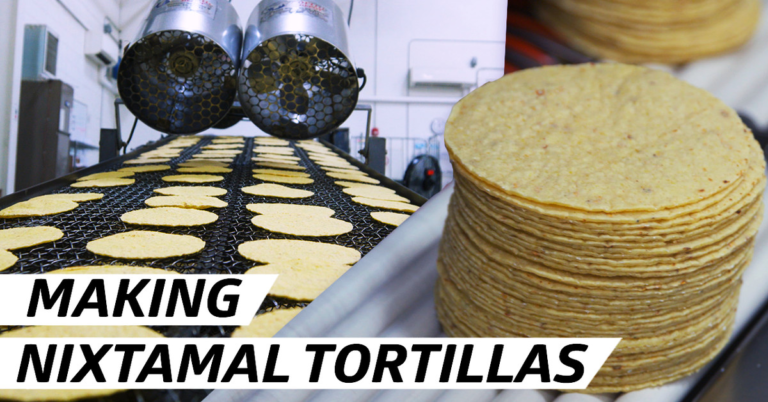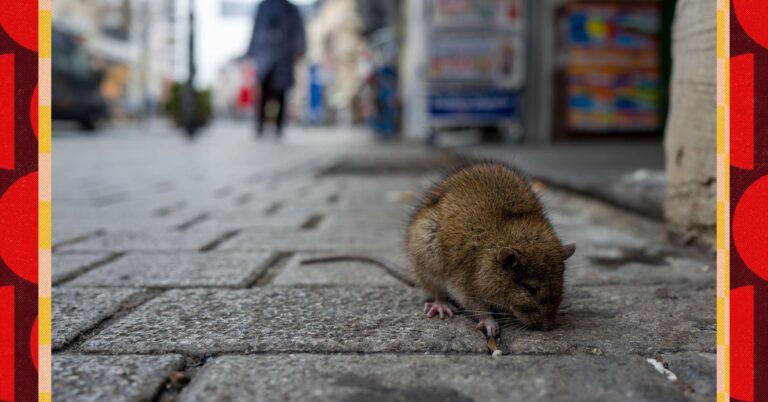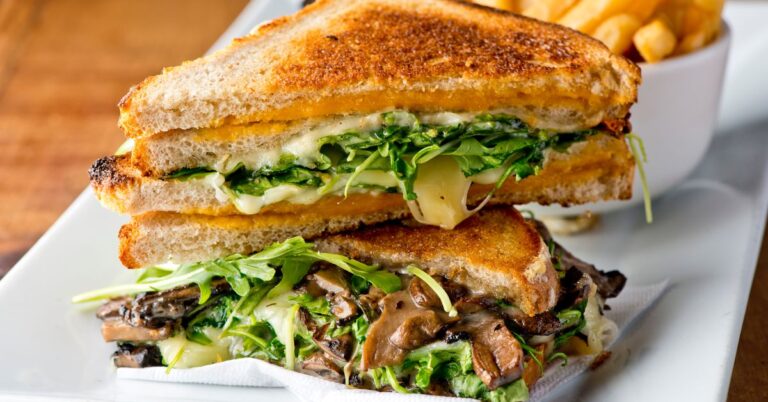The Best Street Food in Oaxaca City, Mexico
During the five years I lived in Oaxaca, in the last building on a dead-end cobblestone street, I marked time by the paleta man. I would wake up early in the morning and work until I heard that tripartite, baritone call from the calle below: “Pa-le-tas Pop-ey-e! Pa-le-tas Pop-ey-e!”
“Güera,” the vendor would greet me, nodding. I’d order nuez con coco (pecans and coconut), or lime, or Oaxaca’s signature flavor: leche quemada con tuna. Tuna is cactus fruit — deep pink, with soft seeds and the consistency of kiwi but the gentle sweetness of a pear — and leche quemada is “burnt milk,” which tastes way better than it sounds (creamy and smoky).
My husband, Jorge, and I left Oaxaca in 2010. Twelve years after we’d moved from our tiny apartment at the end of M. Bravo, Jorge, our 5-year-old, Elena, and I were walking down a street in the Centro when I heard it: that uncanny, three-note song rumbling like thunder up the cobblestones. I grabbed Elena’s hand and ran. The vendor and his cart looked exactly the same. “Güera,” he greeted me. It was as if the intervening decade had been a mere afternoon. He chatted with Elena while she ate her dulce de leche.
Oaxaca has changed in profound ways in the years since we left. Each time we return, we’re shocked at the new crop of upscale restaurants offering 1,000-peso plates. Some of these places are doing marvelous work, innovating and riffing on local ingredients — from grasshoppers to quesillo. For me, though, the heart of Oaxacan food is still found tucked down cobblestone alleyways and in corners under awnings and on hot stone sidewalks. What follows is my personal roundup of a day’s worth of excellent eating inspired by and discovered on the street.
Market Breakfast
:no_upscale()/cdn.vox-cdn.com/uploads/chorus_asset/file/23233299/FONDAROSITA_220112_0003.jpg)
The market is where the day should begin. If you’re on the city’s eastern side, there’s La Merced, and inside, Fonda Rosita. Order the chilaquiles verdes. They come sizzling in a clay pot, with two fried eggs, onions, and crema — that Oaxacan version of sour cream that is more cream than sour — on top. Order rojos, made with chile guajillo, but you really have to experience the verdes, since the tanginess of the tomatillo salsa is the ideal complement to the salty, crunchy fried tortillas. The egg yolk runs over the whole bubbling extravaganza and… yeah. Ideal for post-mezcal haze.
If you’re on the city’s western side, there’s Sánchez Pascuas. First stop should be Super Jugos Angelita, run by the eponymous Angelita and her family. You can order just about any juice conceivable, from bare-bones fresh-squeezed orange to guava-carrot-grapefruit-watermelon-kiwi-beet. There are also milk-based drinks, like a mangoneada: milk blended with fresh mango and banana. If you come here around Christmas, pick up a bottle of homemade eggnog — rompope — tied with a ribbon. (Alternatively, get your eggnog, and your homemade pickled jalapeños, from the nuns who sell it on Sundays in front of Santo Domingo.)
:no_upscale()/cdn.vox-cdn.com/uploads/chorus_asset/file/23233228/MEMELAS_SANCHEZ_PASCUAS_220127_0011.jpg)
:no_upscale()/cdn.vox-cdn.com/uploads/chorus_asset/file/23233230/MEMELAS_SANCHEZ_PASCUAS_220127_0018.jpg)
Directly in front of Jugos Angelita are a memela stand and a tamales stand, each one of the best in the city. A memela is one of Oaxaca’s most basic and essential elements: a hand-rolled and pressed tortilla, grilled on the comal and topped with bean paste, queso fresco, and your choice of savory topping. If you’re a purist, go for the simplest memela — sencillo — with just the asiento (lard), beans, queso fresco, and a dabbling of salsas. If you’re like me and need more layered heat and flavor, try papas con chorizo, or tinga (chicken in spicy tomato sauce), or mushroom.
When you’re done with memelas, inhale, reset, and turn to the tamales. Mole is the boldest choice here: It comes folded in wet banana leaves and is succulent and sweet and savory and steaming.
Subtler choices include frijol, a thick black bean paste; verde, chicken in green salsa; and rajas, pickled chiles in red salsa. The latter is a lovely blend of dense, grainy, sweet masa with a spicy kick — and not quite as heavy as the others.
Street Tacos and Tortas
:no_upscale()/cdn.vox-cdn.com/uploads/chorus_asset/file/23233246/TORTAS_LA_HORMIGA_220112_0004.jpg)
When it comes to lunch tacos, there are really only two options: the taco stand up the street from the Carmen Alto church or the taco stand down the street from the Carmen Alto church. Since we lived one block from the latter, I am heavily biased and will focus on its offerings. Eating here means sitting on a bench with a mix of schoolchildren and families and hungry workers, or standing up in the actual street. Either way, there is only one choice: tacos de chile relleno.
These are not the folded-up kind of tacos you often find in the U.S. but rather rolled-up tortillas, each with its own chile relleno — stuffed and fried poblano peppers — inside. These tacos are spicy. They are meaty with ground beef. They are tender and moist, and the plain tortilla absorbs the oil as you eat, and it’s just delightful. If you arrive too late, the mushroom option is just fine. But make a note to yourself to come earlier tomorrow.
Another lunch essential is Tortas La Hormiga in Conzatti Park. It will be hopping from around 11 until 2 or so, when torta after torta is churned out on the grill. Choose from chile relleno, ham, or a beef or chicken cutlet (milanesa de res or milanesa de pollo). The torta is made from circular, puffy white bread pressed on the grill to crispiness, almost panini-like but lighter. All come with quesillo, salsa, pickled vegetables, and black bean paste in addition to their main filling. The plaza that hosts the food truck is a great place to sit on a fountain’s edge and munch your torta.
:no_upscale()/cdn.vox-cdn.com/uploads/chorus_asset/file/23233239/TORTAS_LA_HORMIGA_220112_0010.jpg)
Sweets
If you’re lucky enough to stumble upon the aforementioned paleta man, then you should really go for the leche quemada con tuna and eat it as you wander. If not, there are other options: the new, highly Instagrammable Mezcalite Pop!, on Porfirio Diáz, one block up from M. Bravo. It sells paletas and traditional Oaxacan nieves, which are often translated as “ice creams” but are more like creamy ices. You can find all the standard Oaxacan popsicles here, as well as nieves spiked with mezcal and a ton of fancy toppings, from hibiscus salt to crushed agave worms. It’s very Oaxacan to combine the sweet with the savory, so you can order, say, a mango nieve drizzled with chamoy — a kind of salty-sweet chile sauce — and decorated with chewy tamarind candy and a rainbow of salts.
There’s also the picturesque plaza de nieves beside the Iglesia de la Soledad, where you can sit down and order your nieve at one of many small booths. This plaza has a fairy-tale quality to it, like an old-fashioned ice cream parlor transported onto a quaint stone plaza, complete with a fountain in the middle. The nieves are displayed in their big metal bins and served in dainty glass cups. This is a perfect spot to indulge your nostalgic tendencies during a long, blue Oaxacan dusk.
Late Night
:no_upscale()/cdn.vox-cdn.com/uploads/chorus_asset/file/23233253/TLAYUDASLACHINITA_220126_0005.jpg)
You’re walking down a quiet street in the Centro at night and you hear it: a piercing whistle, like a locomotive is bearing down on you from out of nowhere. In a few moments, a man emerges, pushing what looks like a huge rusty barrel with a miniature smokestack welded to its lid. It’s the fried-banana man! Platanos fritos are smoky-sweet and surprisingly hearty, and they come topped with a drizzle of sweetened condensed milk.
If you have a buoyant, prolonged happy hour, you’ll definitely want to top off the night with a tlayuda. There are now fancy 500-peso tlayudas at Oaxaca’s burgeoning crop of upscale, sit-down restaurants, but this quintessential Oaxacan food is best appreciated after a long beery night when you’re longing for something huge, salty, and crunchy. Make the trek down 20 de Noviembre to where it intersects with Calle de Nuño del Mercado in the south of the city, and you’ll discover Tlayudas La Chinita. It’s a streetside show of grilling flair, with a full team charring chorizo to perfection, coaxing tasajo (Oaxacan skirt steak) to charred tenderness, and flipping the massive tortillas — moon-shaped, totally eclipsing any normal dinner plate — until they’re as crispy as chips. Each tlayuda is given a thin coating of asiento as well as black bean paste, a handful of sliced lettuce or cabbage, and Oaxacan cheese, in addition to the meat of your choice.
:no_upscale()/cdn.vox-cdn.com/uploads/chorus_asset/file/23233149/MEMELAS_SANCHEZ_PASCUAS_220127_0004.jpg)
:no_upscale()/cdn.vox-cdn.com/uploads/chorus_asset/file/23233362/TLAYUDASLACHINITA_220126_0002.jpg)
If you don’t need a post-party belly filler and just want a snack, there is my child’s singular Oaxacan obsession: esquites. It’s gotten so intense that when we land in Oaxaca, even if it’s midnight — especially if it’s midnight — we have to go hunt down an esquite. Esquites are steaming cups of Oaxacan corn — chewy, herby, salty — swirled with mayonnaise, queso fresco, lime, and sal de chile. They are tangy and creamy and textured and the closest thing you can get to junk food that is still (if you don’t quite look at the massive spoonful of mayonnaise) pretty healthy. They are sold from rolling carts lit by small bulbs, which move slowly through the streets like ships in the night sea.
You eat an esquite still so hot, it singes your tongue as you stroll the dark streets. Or you can sit, like my daughter, on the low wall in front of Santo Domingo, watching the constant show of humanity unfold on the street, letting the herbed steam reset your body so you’re on Oaxacan time now, Oaxaca coursing warm and vivid in your veins.
Sarah Menkedick is the author of Ordinary Insanity: Fear and the Silent Crisis of Motherhood in America. Eva Alicia Lépiz is a photographer and educator based in Oaxaca, where she works on stories related to food and culture.







